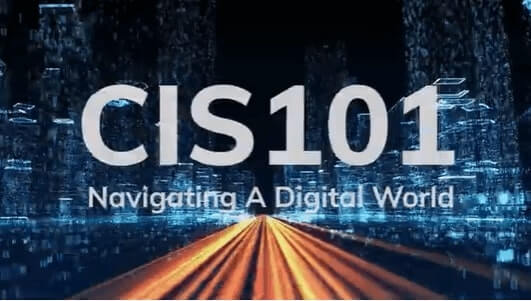Associate in Arts Information Technology
PROGRAM AT A GLANCE
Why get an AA in Information Technology from Strayer?
The AA in Information Technology can help you gain critical thinking skills and learn about the technology, tools and infrastructure needed for business success. What’s more, you’ll be taught by established professionals who can connect what you learn in the classroom to the real world.
Take the first step toward an IT profession
With an associate degree in information technology, you could embark on potential career opportunities in the dynamic and ever-growing field of IT. You’ll learn the skills needed to help design, implement and evaluate computer-based systems, programs and processes. Examine the professional, ethical, legal and security issues related to the field while harnessing essential skills business value.
Skills you’ll learn with a Strayer Associate in Arts, Information Technology
A Strayer degree can help prepare you for career opportunities in IT while offering support, flexible learning options and career planning every step of the way.
- Apply basic business management skills in the public and private sectors.
- Locate, evaluate and solve business problems with technology.
- Design, implement and evaluate computer-based systems, processes, components and programs.
- What can you do with an associate degree in IT: Understand the professional, ethical, legal and security issues related to technology.
- Analyze the impact of computing on individuals, organizations and society.
- Identify and include user needs in the selection, creation, evaluation and administration of technology.
Earn your degree from an accredited university
Strayer University is an accredited institution and a member of the Middle States Commission on Higher Education (MSCHE or the Commission) www.msche.org. Strayer University’s accreditation status is Accreditation Reaffirmed. The Commission’s most recent action on the institution’s accreditation status on June 22, 2017 was to reaffirm accreditation. MSCHE is recognized by the U.S. Secretary of Education to conduct accreditation and pre-accreditation (candidate status) activities for institutions of higher education including distance, correspondence education, and direct assessment programs offered at those institutions. The Commission’s geographic area of accrediting activities is throughout the United States.

Associate in Arts in Information Technology cost breakdown
- 20 courses, $1525 per course
- $65 technology fee each term
- $150 one-time degree conferral fee
- Additional costs for textbooks and supplies
Estimate the cost of your degree
How much can I save on a AAIS?
Estimate the cost of your degree
How much can I save on a AAIS?
Expected Graduation
...
Approximate Total
...
*Student is required to take two courses per quarter during disbursement period
PREPARING YOUR RESULTS
Time commitment
Calculate the approximate time commitment of your degree.
| Course load | ... courses/term |
| Classroom time | ... hours/week |
| Terms per year | ... terms |
| Terms to graduation | ... terms |
Cost analysis
Calculate the approximate cost of your degree
| Tuition | ... |
| Books | ... |
| Fees | ... |
| No-cost gen ed | $0 |
| Transfer credits | ... |
| Transfer Credit Scholarship | $0 |
| $4K scholarship | $0 |
| Strayer Learn and Earn Scholarship | $0 |
| Approximate total | ... |
What coursework do you need to specialize in information technology?
From understanding user experiences and network troubleshooting to navigating professional, ethical and legal issues related to IT, the curriculum covers the basics you need to move toward your goals. View all courses.
Sample courses

Technology has transformed the way we live and work and staying up-to-date with digital tools can keep you ahead of the game. From Microsoft Office to social media to productivity tools, this course will teach you about technological tools you can use to stay organized, maximize your time, and stand out personally and professionally.

This course introduces students to the general purpose of information systems in organizations and their use of personal productivity software. Students will demonstrate tasks in common application software to include word processing, web browsing, spreadsheet modeling, database management, and presentation graphics.
This course provides a foundational overview to the discipline of information technology that illuminates key computing concepts and describes how those concepts relate to other computing disciplines. Students are presented the diverse context in which information technology is used and the challenges inherent in the diffusion of innovative technologies.
The course introduces students to fundamental programming concepts to include event-driven programming, object-oriented programming, basic data structures, and algorithmic processes. Emphasis is placed on structure, decision-making, looping, arrays, methods, objects, events, databases, pseudo coding and visual flowcharting to construct workable programs.
This course introduces students to the fundamentals of networking technology. The focus of the course will include networking protocols, topologies, hardware and operating systems. Topics include data communications, telecommunications, infrastructure security, inter/intranetworking and the application of networking to multimedia, information storage and distribution.
This course presents students with concepts and essential skills required to administer operating systems, networks, software, file systems, file servers, web systems, database systems, system documentation, policies and procedures. Topics include the methods required to select, deploy, integrate and administer computing platforms or components that support an organization's information technology infrastructure. The fundamentals of hardware and software and how they integrate to form essential components of systems also explored.
How to apply for an Associate in Arts degree at Strayer?
An admissions officer can help you choose the right program, register for classes and transfer credits.
Here’s what you’ll need to get started:
A completed application and enrollment agreement
A high school diploma or equivalent
A valid, current and legible government-issued photo ID
Winter classes start on January 5
Learn more about Strayer University’s admissions process.
Transferring to Strayer from another university?
Transfer up to 14 eligible classes from a prior college or university to your associate in arts degree, saving time and money.
Strayer welcomes international students
Strayer University is proud to have hosted more than 4,000 international students from over 143 countries. Earn your degree in the U.S. or completely online in your home country – it’s your choice.

Campus locations
Come to a campus near you for guidance and support. You’ll have access to helpful resources, a supportive community and plenty of spaces to learn and grow.
Ready to take the next step?
Your admissions officer is here to guide you through every step of the process, from completing your application to choosing your concentration.
Experience the Strayer difference
Start-to-finish support
Your admissions officer and student services coach will motivate and support you from enrollment to the day you graduate.
A real student community
Experience online and live discussions, receive mentoring, expand your professional networks and create life-long friendships.